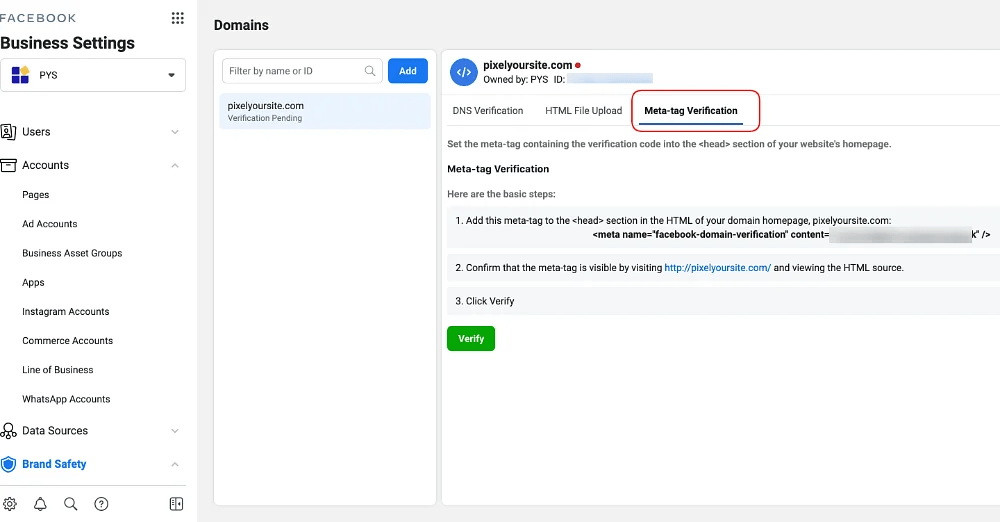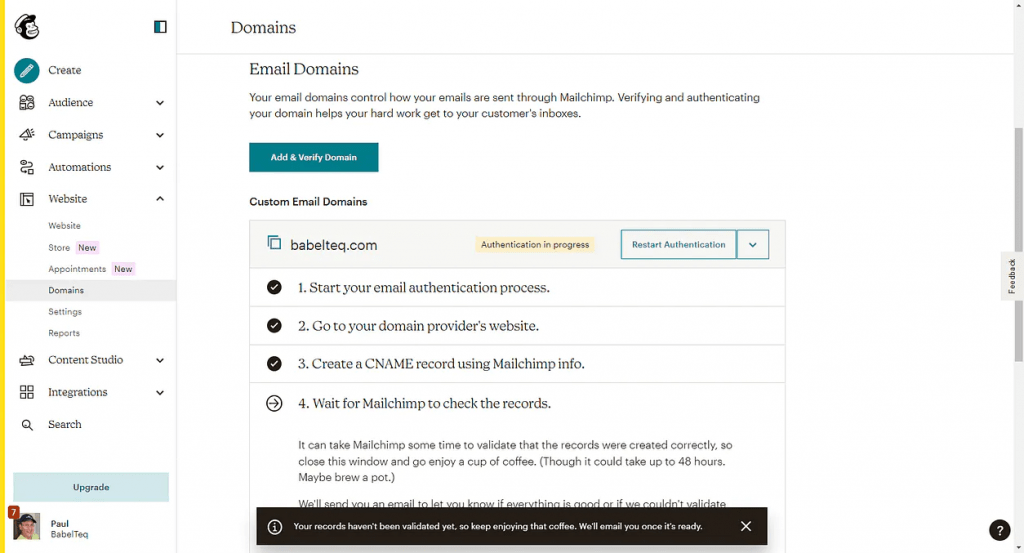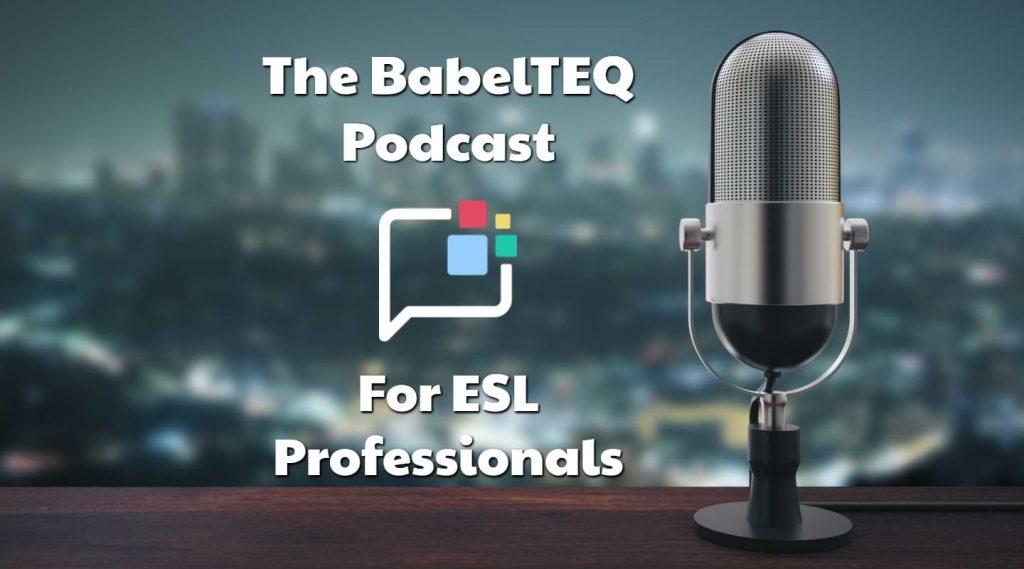When you create a new website with a website building service (e.g. WIX) or a funnel building platform like BabelTEQ, you’ll be given the option of connecting to your own domain or using their free subdomain e.g., a choice between teacherjohn.com OR teacherjohn.wix.com
Why would you want to pay for your own website domain? What are the advantages?
In this article we are going to look at several reasons why it makes good sense to register and use your own custom domain name.
Table of Contents
Some Terminology
Domain or Custom Domain : When people refer to this, they are usually talking about the complete address for a web destination including the TLD such as teacherjohn.com
Top Level Domain (TLD) : The suffix of the domain, such as .com or .org. So in the above example, the TLD for teacherjohn.com is “.com“
Country Code Top Level Domain (ccTLD) : A specific type of top level domain that signifies it is intended for a specific country, such as .ca (Canada), .fr (France) or .com.au (Australia). So if the domain were teacherjohn.co.uk, then “.co.uk” would be the ccTLD. Not every website uses a ccTLD. Many use a generic TLD like “.com” or “.org” or “.co”
Subdomain : When a domain name is preceded by dot and something else, this is a subdomain. e.g. teacherjohn.wix.com is a using “teacherjohn” as a subdomain.
Professional Appearance
There is no doubt that having a web presence that sits on your own domain gives a more polished and serious impression. Not only for your website but also for your email. Some clients might raise their eyebrows at receiving an email from teacherjohn@gmail.com . The unspoken question in their mind is this – “If you aren’t ready to invest in your own domain name, should I be ready to invest in working with you?”
Your Domain As A Marketing Tool
When you have a memorable, meaningful, and easily shareable brand name, it makes absolute sense to have a unique domain name so that clients can easily find you on the web.
Furthermore, by registering your own domain, you are “future proofing” your business against the possibility that somebody else can steal the your brand name recognition by registering a domain which copies your business name.
Please read this article if you want to learn more about how to choose an effective brand name.
Better for Content Marketing SEO
Google and other search engines give a boost to content which they see as coming from authors who demonstrate expertise, authority and trust (the EAT factor). The search algorithm which they use to determine where your site ranks, will look to the age of the domain name as one of the factors in determining the authority of the author.
With all the phishing scams on the web nowadays, Google gives bonus points to content which is hosted on it’s own domain rather than on a subdomain.
Verification for Facebook
In order to run a paid advertising campaign on Facebook you will need to verify that you are the owner of the destination domain where you are sending visitors (for conversion campaigns). That’s not possible to do with a subdomain site, since you don’t own the “base” domain which you are using.
So in order to satisfy Facebook requirements you’ll need to own the domain before you can advertise on their platform.

Teacherpreneur Marketing
ACADEMY
FACEBOOK GROUP
Verify for Email Marketing
Another verification issue concerns your email accounts, specifically for email marketing purposes. Most email marketing platforms, like MailChimp, will let you use a “free” email account, like teacherjohn@yahoo.com but it may negatively impact how many of your email messages get delivered to the recipient’s inbox. Many email clients will interpret such mail as “spam”.
To improve your chances of avoiding the spam filter it’s always a good idea to use an email address associated with your own domain name and to “validate” that domain. This can be done a couple of ways, but the most common way is to use something called a DKIM record, which is a single CNAME record you can easily add to your domain name register. If that sounds intimidating, don’t worry. MailChimp has a wizard that will walk you through the steps.
Without your own domain name, it’s possible that a much higher percentage of your email broadcasts will get marked as “spam”.


Domain Name Registry
In order to purchase your own domain name, you will need to register an account with a domain name registry (an organization which creates and sells domain names). Typically, if the domain name you want to use is available (i.e.; it’s not currently owned by someone else) you shouldn’t have to pay a lot of money. Keep in mind that the renewal cost can be slightly more expensive that the initial registration.
ANNUAL REGISTRATION COSTS
| Domain | GoDaddy | Namecheap | Google Domains |
|---|---|---|---|
.com | $5.17 | $8.98 | $12 |
.com renewal | $19.17 | $13.98 | $12 |
.net | $15.17 | $10.98 | $12 |
.net renewal | $20.17 | $14.98 | $12 |
.org | $10.17 | $8.98 | $12 |
.org renewal | $21.17 | $14.98 | $12 |
Watch this video to see how you can get started on finding and registering a domain (using GoDaddy.com).
A word of caution. It’s always best to use a well established domain name registry like Google Domains or GoDaddy when you are doing research into domain name availability. In the past there have been reported instances where “some” domain name registries will effectively hi-jack certain domain names (i.e. place a “lock” on them for a specific number of days) based on user search queries.
Domain Privacy Protection
When you register your domain, you need to provide certain personal information such as your name, email address and contact phone number. This information gets passed to the WHOIS database, which is a publicly searchable online directory. This is obviously problematic if you want to minimize spam email, calls and phishing scams.
When you register your domain you may be asked if you want to pay for “Domain Privacy Protection”, which I think is definitely worth it.
The Privacy Protection service will register your domain behind a “proxy” so that all your personal contact information remains secret. It usually costs somewhere between $2 and $20 per year.
Managing Your Domain Name
Once you’ve successfully registered your domain you can start using it any time you like. In order to create email accounts tied to the domain I recommend that you use a dedicated email service like Google Workspace (formerly GSUITE) and follow their tutorials on how to create email accounts. The $US6/mth plan should be fine for most people.
In order to point your domain name to a website (the IP address of your webserver) you’ll need to edit your domain records. Depending on which domain registrar you are using, the process might look a little different. But the overall concept is the same. You need to change something called an A-Record so that it points to the correct IP address. FYI your website doesn’t need to be hosted with your domain registrar.
Watch this video to see how I update domain records for a domain registered on GoDaddy.
Conclusion
Registering a custom domain will give your business an edge over the competition and make it easier for people to remember your brand. It also gives you more control over how people find your business online.
Custom domains are important for branding, SEO and general online presence.
The author of this post lives in Japan with his wife and family. He has taught English part-time (online and off) for more than a decade. He is passionate about WordPress consulting, online marketing and using the power of the internet to help people achieve their dreams.
He thinks that until you’ve tried sashimi tuna with wasabi, soy sauce, hot sake and a cold beer chaser, you just haven’t lived.


